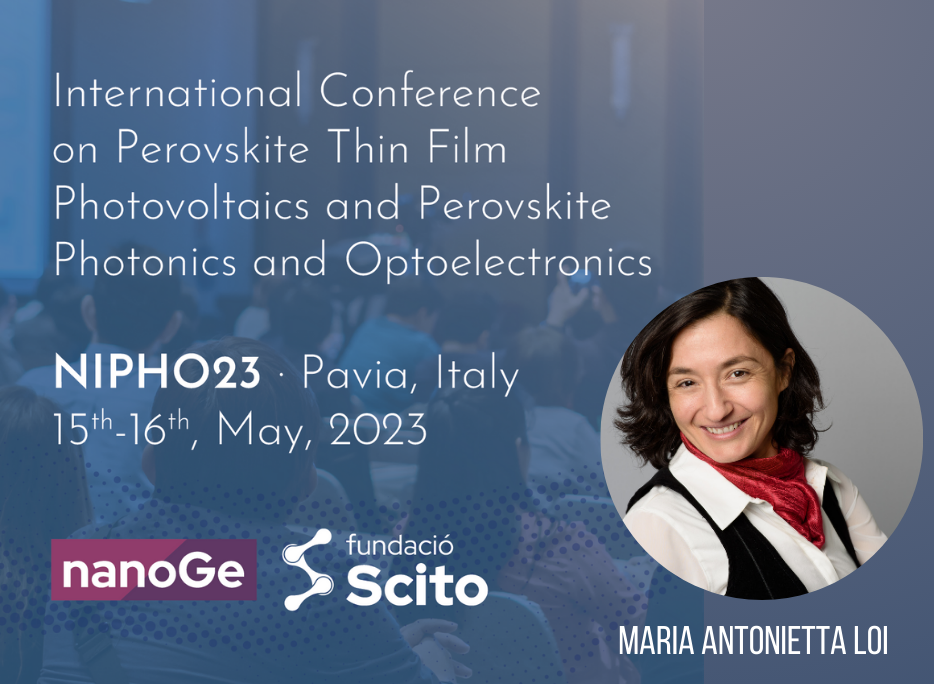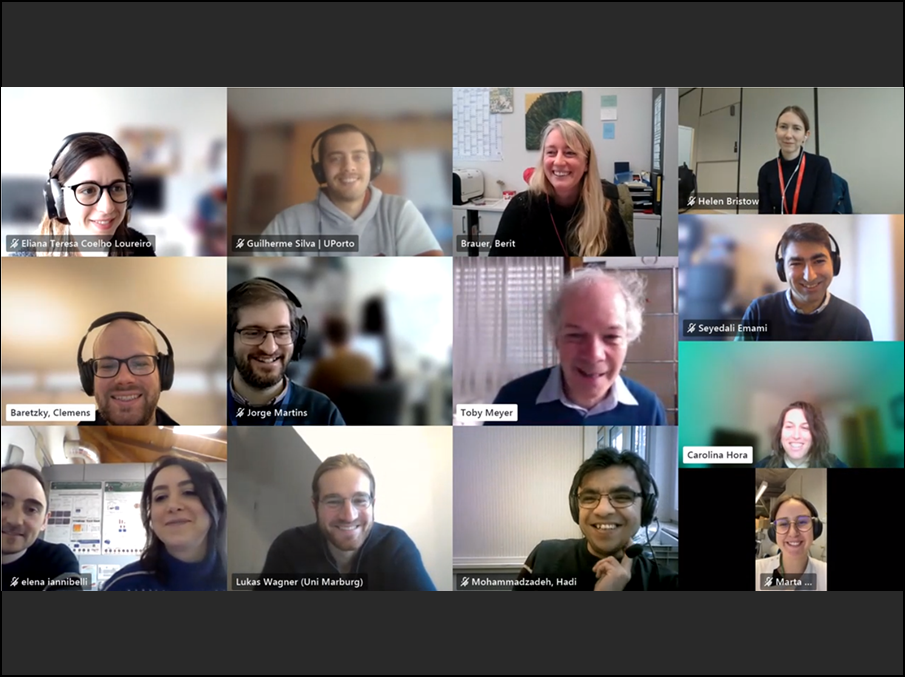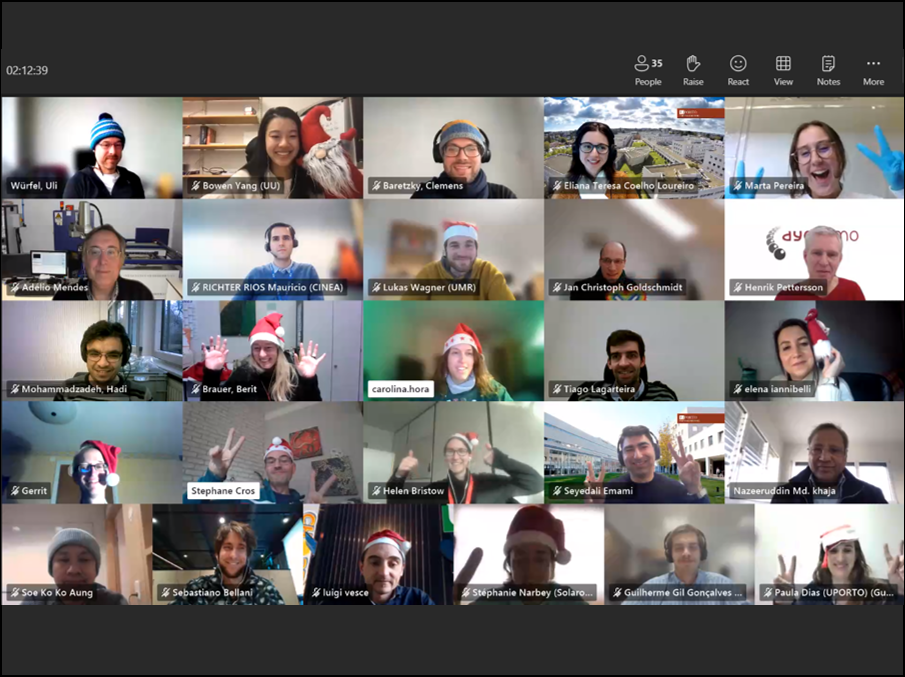NIPHO23 Spotlight: Maria Antonietta Loi’s Expertise in Perovskite Solar Cells
International Conference on Perovskite Thin Film Photovoltaics and Perovskite Photonics and Optoelectronics | Pavia, Italy
We are thrilled to share that Maria Antonietta Loi, a renowned expert in photophysics and optoelectronics from the University of Groningen, was invited speaker at the recently concluded NIPHO23 Conference on Thin Film Photovoltaics and Perovskite Photonics and Optoelectronics.
Her presentation entitled “Carbazole Based Self-Assembled Monolayer as Hole Transport Layer for Efficient and stable Sn/Pb Perovskite Solar Cells”, fit in perfectly with the scope of the NIPHO23 Conference, which spotlighted the recent progress in hybrid perovskite-based solar cells, with a particular focus on the crucial stability challenges that are pivotal for scaling up this technology. This gathering showcased contributions on topics ranging from enhancing device stability and durability, exploring more efficient and versatile configurations, to the art of interface engineering and its impact on device stability and efficiency. Emphasis on breakthroughs in highly efficient single and multi-junction cells, as well as the development of tandem configurations were discussed. Moreover, fundamental aspects such as the theoretical description of electronic structures, modeling optical and charge transport properties, and novel advanced characterization techniques were explored.
Maria Antonietta Loi, boasts an illustrious career in physics and materials science. She obtained her PhD in physics from the University of Cagliari, Italy, and went on to contribute significantly to the Linz Institute for Organic Solar Cells in Austria and the Institute for Nanostructured Materials of the Italian National Research Council. Currently a full professor and Chair of the Photophysics and OptoElectronics group at the University of Groningen, the Netherlands, Maria has published over 240 peer-reviewed articles on photophysics and optoelectronics of various materials.
Her remarkable achievements have been recognized worldwide. Maria was honored with an ERC Starting Grant in 2013 and an ERC Advanced Grant in 2022 from the European Research Council. She serves as a Deputy Editor of Applied Physics Letters and holds memberships in the international advisory boards of prestigious physics and materials science journals. Notably, she received the Physicaprijs from the Dutch physics association in 2018 for her outstanding contributions to organic-inorganic hybrid materials. In 2020, she became a Fellow of the American Physical Society, and in 2022, a Fellow of the Dutch Academy of Science (KNAW), the European Academy of Science (EURASC), and the Royal Society of Chemistry.




